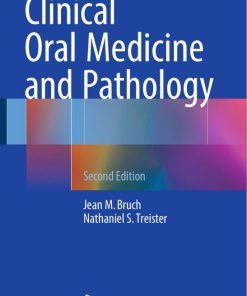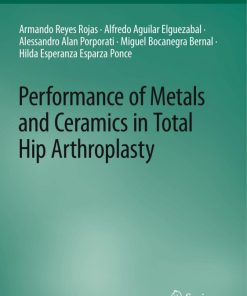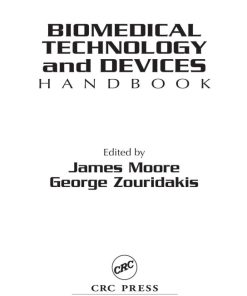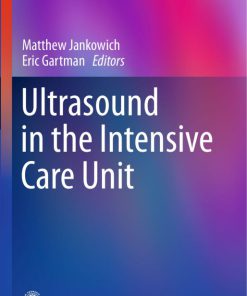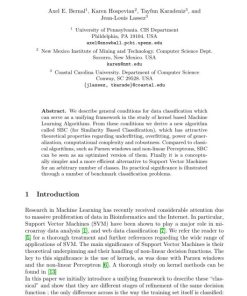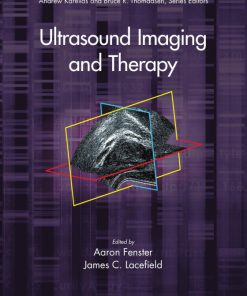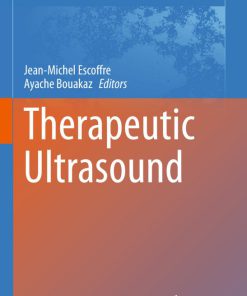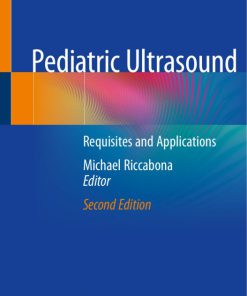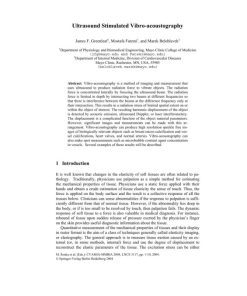Ultrasound Elastography for Biomedical Applications and Medicine 1st edition by Ivan Nenadic, Matthew Urban, James Greenleaf, Jean Luc Gennisson, Miguel Bernal, Mickael Tanter ISBN 1119021510 978-1119021513
$50.00 Original price was: $50.00.$25.00Current price is: $25.00.
Authors:Nenadic, Ivan Z.; Urban, Matthew W.; Gennisson, Jean-Luc , Series:Medicine [115] , Author sort:Nenadic, Ivan Z.; Urban, Matthew W.; Gennisson, Jean-Luc , Languages:Languages:eng , Published:Published:Oct 2018 , Publisher:Wiley
Ultrasound Elastography for Biomedical Applications and Medicine 1st edition by Ivan Nenadic, Matthew Urban, James Greenleaf, Jean Luc Gennisson, Miguel Bernal, Mickael Tanter – Ebook PDF Instant Download/Delivery. 1119021510 978-1119021513
Full download Ultrasound Elastography for Biomedical Applications and Medicine 1st edition after payment
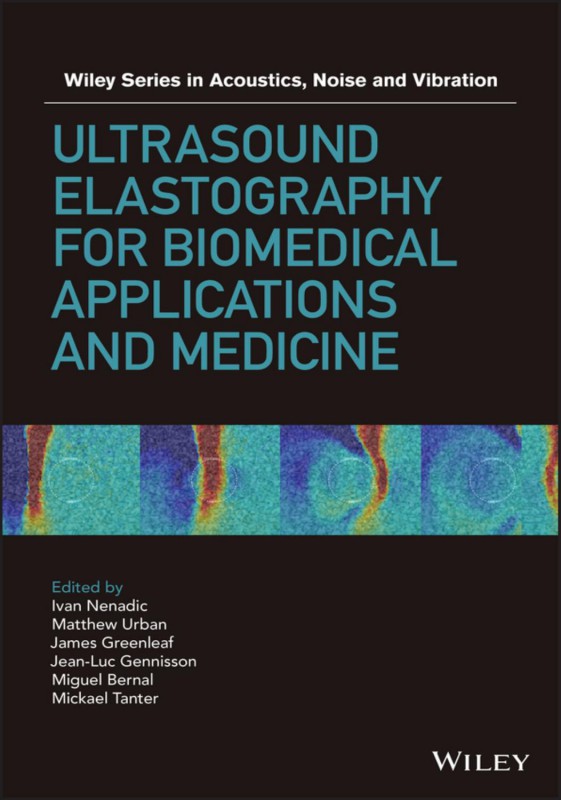
Product details:
ISBN 10: 1119021510
ISBN 13: 978-1119021513
Author: Ivan Nenadic, Matthew Urban, James Greenleaf, Jean Luc Gennisson, Miguel Bernal, Mickael Tanter
Ultrasound Elastography for Biomedical Applications and Medicine
Ivan Z. Nenadic, Matthew W. Urban, James F. Greenleaf, Mayo Clinic Ultrasound Research Laboratory, Mayo Clinic College of Medicine, USA
Jean-Luc Gennisson, Miguel Bernal, Mickael Tanter, Institut Langevin – Ondes et Images, ESPCI ParisTech CNRS, France
Covers all major developments and techniques of Ultrasound Elastography and biomedical applications
The field of ultrasound elastography has developed various techniques with the potential to diagnose and track the progression of diseases such as breast and thyroid cancer, liver and kidney fibrosis, congestive heart failure, and atherosclerosis. Having emerged in the last decade, ultrasound elastography is a medical imaging modality that can noninvasively measure and map the elastic and viscous properties of soft tissues.
Ultrasound Elastography for Biomedical Applications and Medicine covers the basic physics of ultrasound wave propagation and the interaction of ultrasound with various media. The book introduces tissue elastography, covers the history of the field, details the various methods that have been developed by research groups across the world, and describes its novel applications, particularly in shear wave elastography.
Key features:
- Covers all major developments and techniques of ultrasound elastography and biomedical applications.
- Contributions from the pioneers of the field secure the most complete coverage of ultrasound elastography available.
The book is essential reading for researchers and engineers working in ultrasound and elastography, as well as biomedical engineering students and those working in the field of biomechanics.
Ultrasound Elastography for Biomedical Applications and Medicine 1st Table of contents:
Section I: Introduction
1 Editors’ Introduction
References
Section II: Fundamentals of Ultrasound Elastography
2 Theory of Ultrasound Physics and Imaging
2.1 Introduction
2.2 Modeling the Response of the Source to Stimuli [ ]
2.3 Modeling the Fields from Sources [ ]
2.4 Modeling an Ultrasonic Scattered Field [ ]
2.5 Modeling the Bulk Properties of the Medium [ ]
2.6 Processing Approaches Derived from the Physics of Ultrasound [Ω]
2.7 Conclusions
References
3 Elastography and the Continuum of Tissue Response
3.1 Introduction
3.2 Some Classical Solutions
3.3 The Continuum Approach
3.4 Conclusion
Acknowledgments
References
4 Ultrasonic Methods for Assessment of Tissue Motion in Elastography
4.1 Introduction
4.2 Basic Concepts and their Relevance in Tissue Motion Tracking
4.3 Tracking Tissue Motion through Frequency‐domain Methods
4.4 Maximum Likelihood (ML) Time‐domain Correlation‐based Methods
4.5 Tracking Tissue Motion through Combining Time‐domain and Frequency‐domain Information
4.6 Time‐domain Maximum A Posterior (MAP) Speckle Tracking Methods
4.7. Optical Flow‐based Tissue Motion Tracking
4.8 Deformable Mesh‐based Motion‐tracking Methods
4.9 Future Outlook
4.10 Conclusions
Acknowledgments
Acronyms
Additional Nomenclature of Definitions and Acronyms
References
Section III: Theory of Mechanical Properties of Tissue
5 Continuum Mechanics Tensor Calculus and Solutions to Wave Equations
5.1 Introduction
5.2 Mathematical Basis and Notation
5.3 Solutions to Wave Equations
References
6 Transverse Wave Propagation in Anisotropic Media
6.1 Introduction
6.2 Theoretical Considerations from General to Transverse Isotropic Models for Soft Tissues
6.3 Experimental Assessment of Anisotropic Ratio by Shear Wave Elastography
6.4 Conclusion
References
7 Transverse Wave Propagation in Bounded Media
7.1 Introduction
7.2 Transverse Wave Propagation in Isotropic Elastic Plates
7.3 Plate in Vacuum: Lamb Waves
7.4 Viscoelastic Plate in Liquid: Leaky Lamb Waves
7.5 Isotropic Plate Embedded Between Two Semi‐infinite Elastic Solids
7.6 Transverse Wave Propagation in Anisotropic Viscoelastic Plates Surrounded by Non‐viscous Fluid
7.7 Conclusions
Acknowledgments
References
8 Rheological Model‐based Methods for Estimating Tissue Viscoelasticity
8.1 Introduction
8.2 Shear Modulus and Rheological Models
8.3 Applications of Rheological Models
References
9 Wave Propagation in Viscoelastic Materials
9.1 Introduction
9.2 Estimating the Complex Shear Modulus from Propagating Waves
9.3 Wave Generation and Propagation
9.4 Rheological Models
9.5 Experimental Results and Applications
9.6 Summary
References
Section IV: Static and Low Frequency Elastography
10 Validation of Quantitative Linear and Nonlinear Compression Elastography
10.1 Introduction
10.2 Methods
10.3 Results
10.4 Discussion
10.5 Conclusions
Acknowledgement
References
11 Cardiac Strain and Strain Rate Imaging
11.1 Introduction
11.2 Strain Definitions in Cardiology
11.3 Methodologies Towards Cardiac Strain (Rate) Estimation
11.4 Experimental Validation of the Proposed Methodologies
11.5 Clinical Applications
11.6 Future Developments
References
12 Vascular and Intravascular Elastography
12.1 Introduction
12.2 General Principles
12.3 Conclusion
References
13 Viscoelastic Creep Imaging
13.1 Introduction
13.2 Overview of Governing Principles
13.3 Imaging Techniques
13.4 Conclusion
References
14 Intrinsic Cardiovascular Wave and Strain Imaging
14.1 Introduction
14.2 Cardiac Imaging
14.3 Vascular Imaging
Acknowledgements
References
Section V: Harmonic Elastography Methods
15 Dynamic Elasticity Imaging
15.1 Vibration Amplitude Sonoelastography: Early Results
15.2 Sonoelastic Theory
15.3 Vibration Phase Gradient Sonoelastography
15.4 Crawling Waves
15.5 Clinical Results
15.6 Conclusion
Acknowledgments
References
16 Harmonic Shear Wave Elastography
16.1 Introduction
16.2 Basic Principles
16.3 Ex Vivo Validation
16.4 In Vivo Application
16.5 Summary
Acknowledgments
References
17 Vibro‐acoustography and its Medical Applications
17.1 Introduction
17.2 Background
17.3 Application of Vibro‐acoustography for Detection of Calcifications
17.4 In Vivo Breast Vibro‐acoustography
17.5 In Vivo Thyroid Vibro‐acoustography
17.6 Limitations and Further Future Plans
Acknowledgments
References
18 Harmonic Motion Imaging
18.1 Introduction
18.2 Background
18.3 Methods
18.4 Preclinical Studies
18.5 Future Prospects
Acknowledgements
References
19 Shear Wave Dispersion Ultrasound Vibrometry
19.1 Introduction
19.2 Principles of Shear Wave Dispersion Ultrasound Vibrometry (SDUV)
19.3 Clinical Applications
19.4 Summary
References
Section VI: Transient Elastography Methods
20 Transient Elastography: From Research to Noninvasive Assessment of Liver Fibrosis Using Fibroscan®
20.1 Introduction
20.2 Principles of Transient Elastography
20.3 Fibroscan
20.4 Application of Vibration‐controlled Transient Elastography to Liver Diseases
20.5 Other Applications of Transient Elastography
20.6 Conclusion
References
21 From Time Reversal to Natural Shear Wave Imaging
21.1 Introduction: Time Reversal Shear Wave in Soft Solids
21.2 Shear Wave Elastography using Correlation: Principle and Simulation Results
21.3 Experimental Validation in Controlled Media
21.4 Natural Shear Wave Elastography: First In Vivo Results in the Liver, the Thyroid, and the Brain
21.5 Conclusion
References
22 Acoustic Radiation Force Impulse Ultrasound
22.1 Introduction
22.2 Impulsive Acoustic Radiation Force
22.3 Monitoring ARFI‐induced Tissue Motion
22.4 ARFI Data Acquisition
22.5 ARFI Image Formation
22.6 Real‐time ARFI Imaging
22.7 Quantitative ARFI Imaging
22.8 ARFI Imaging in Clinical Applications
22.9 Commercial Implementation
22.10 Related Technologies
22.11 Conclusions
References
23 Supersonic Shear Imaging
23.1 Introduction
23.2 Radiation Force Excitation
23.3 Ultrafast Imaging
23.4 Shear Wave Speed Mapping
23.5 Conclusion
References
24 Single Tracking Location Shear Wave Elastography
24.1 Introduction
24.2 SMURF
24.3 STL‐SWEI
24.4 Noise in SWE/Speckle Bias
24.5 Estimation of viscoelastic parameters (STL‐VE)
24.6 Conclusion
References
25 Comb‐push Ultrasound Shear Elastography
25.1 Introduction
25.2 Principles of Comb‐push Ultrasound Shear Elastography (CUSE)
25.3 Clinical Applications of CUSE
25.4 Summary
References
Section VII: Emerging Research Areas in Ultrasound Elastography
26 Anisotropic Shear Wave Elastography
26.1 Introduction
26.2 Shear Wave Propagation in Anisotropic Media
26.3 Anisotropic Shear Wave Elastography Applications
26.4 Conclusion
References
27 Application of Guided Waves for Quantifying Elasticity and Viscoelasticity of Boundary Sensitive Organs
27.1 Introduction
27.2 Myocardium
27.3 Arteries
27.4 Urinary Bladder
27.5 Cornea
27.6 Tendons
27.7 Conclusions
References
28 Model‐free Techniques for Estimating Tissue Viscoelasticity
28.1 Introduction
28.2 Overview of Governing Principles
28.3 Imaging Techniques
28.4 Conclusion
References
29 Nonlinear Shear Elasticity
29.1 Introduction
29.2 Shocked Plane Shear Waves
29.3 Nonlinear Interaction of Plane Shear Waves
29.4 Acoustoelasticity Theory
29.5 Assessment of 4th Order Nonlinear Shear Parameter
29.6 Conclusion
References
Section VIII: Clinical Elastography Applications
30 Current and Future Clinical Applications of Elasticity Imaging Techniques
30.1 Introduction
30.2 Clinical Implementation and Use of Elastography
30.3 Clinical Applications
30.4 Future Work in Clinical Applications of Elastography
30.5 Conclusions
Acknowledgments
References
31 Abdominal Applications of Shear Wave Ultrasound Vibrometry and Supersonic Shear Imaging
31.1 Introduction
31.2 Liver Application
31.3 Prostate Application
31.4 Kidney Application
31.5 Intestine Application
31.6 Uterine Cervix Application
31.7 Spleen Application
31.8 Pancreas Application
31.9 Bladder Application
31.10 Summary
References
32 Acoustic Radiation Force‐based Ultrasound Elastography for Cardiac Imaging Applications
32.1 Introduction
32.2 Acoustic Radiation Force‐based Elastography Techniques
32.3 ARF‐based Elasticity Assessment of Cardiac Function
32.4 ARF‐based Image Guidance for Cardiac Radiofrequency Ablation Procedures
32.5 Conclusions
Funding Acknowledgements
References
33 Cardiovascular Application of Shear Wave Elastography
33.1 Introduction
33.2 Cardiovascular Shear Wave Imaging Techniques
33.3 Clinical Applications of Cardiovascular Shear Wave Elastography
33.4 Summary
References
34 Musculoskeletal Applications of Supersonic Shear Imaging
34.1 Introduction
34.2 Muscle Stiffness at Rest and During Passive Stretching
34.3 Active and Dynamic Muscle Stiffness
34.4 Tendon Applications
34.5 Clinical Applications
34.6 Future Directions
References
35 Breast Shear Wave Elastography
35.1 Introduction
35.2 Background
35.3 Breast Elastography Techniques
35.4 Application of CUSE for Breast Cancer Detection
35.5 CUSE on a Clinical Ultrasound Scanner
35.6 Limitations of Breast Shear Wave Elastography
35.7 Conclusion
Acknowledgments
References
36 Thyroid Shear Wave Elastography
36.1 Introduction
36.2 Background
36.3 Role of Ultrasound and its Limitation in Thyroid Cancer Detection
36.4 Fine Needle Aspiration Biopsy (FNAB)
36.5 The Role of Elasticity Imaging
36.6 Application of CUSE on Thyroid
36.7 CUSE on Clinical Ultrasound Scanner
36.8 Conclusion
Acknowledgments
References
Section IX: Perspective on Ultrasound Elastography
37 Historical Growth of Ultrasound Elastography and Directions for the Future
37.1 Introduction
37.2 Elastography Publication Analysis
37.3 Future Investigations of Acoustic Radiation Force for Elastography
37.4 Conclusions
People also search for Ultrasound Elastography for Biomedical Applications and Medicine 1st:
how to perform elastography ultrasound
ultrasound elastography breast cancer
ultrasound elastography breast cancer
ultrasound elastography breast masses
ultrasound elastography technique




